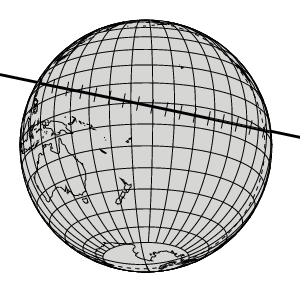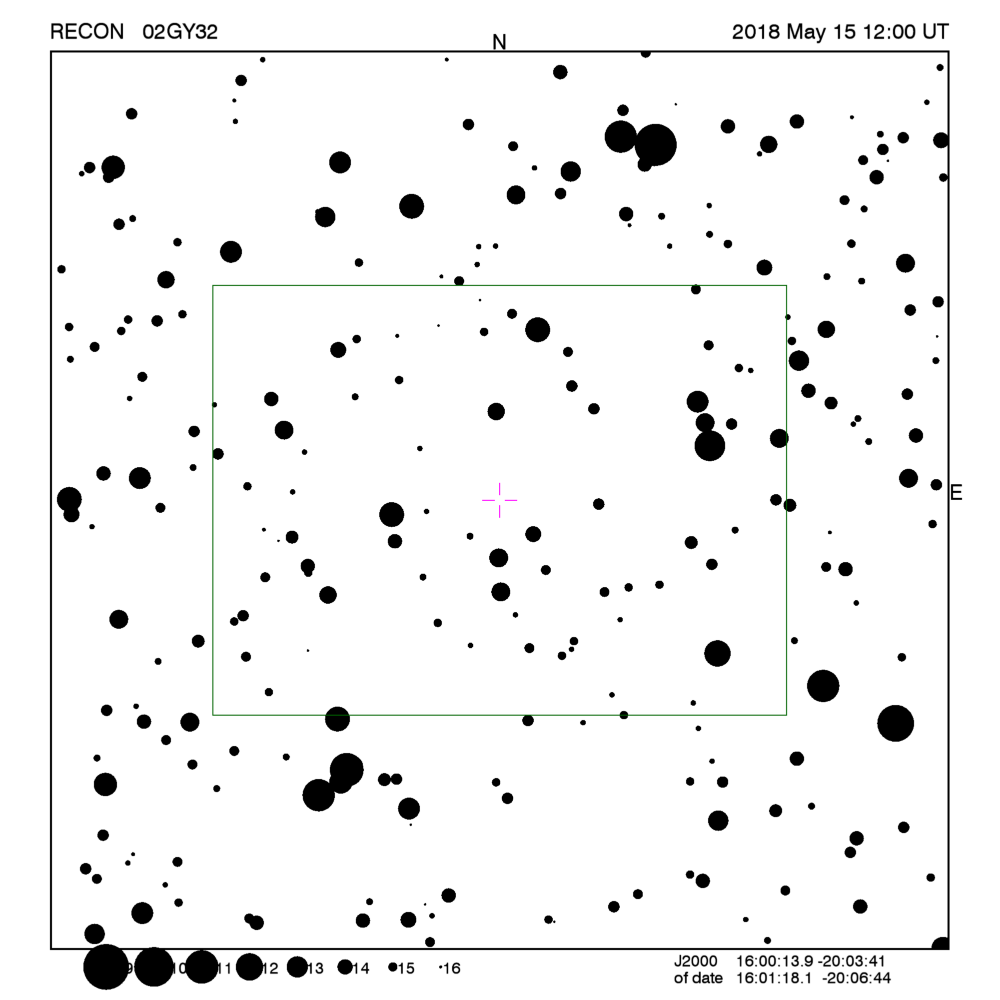RECON: TNO occultation with 02GY32
Event between 02GY32 and star UC4-350-078257
with event index number of 115978
Geocentric closest approach at 2018/05/15 11:59:55 UTC
J2000 position of star is 16:00:13.9 -20:03:41
Equinox of date position of star is 16:01:16.6 -20:06:39
Stellar brightness R=15.6,
use SENSEUP=128
Star is 172 degrees from the moon.
Moon is 0% illuminated.
TNO apparent brightness V=22.7
 TNO is 36.6 AU from the Sun
and 35.6 AU from the Earth.
TNO is 36.6 AU from the Sun
and 35.6 AU from the Earth.
The TNO is moving 24.1
km/sec on the sky relative to the star, or,
3.4 arcsec/hr.
The 1-sigma error in the time of the event is 349 seconds.
The 1-sigma cross-track error in the shadow position is
4250 km.
The TNO has an absolute magnitude Hv=7.1
Diameter=233.4 km assuming a 5% albedo -- 9.7 sec chord
Diameter=95.3 km assuming a 30% albedo -- 4.0 sec chord
Dynamical classification is 3:2E
Star training set for 02GY32, (2018/05/15 12:00UT)
Object RA Dec mag sep mel
Antares 16:30:32.2 -26:28:16 0.9 9.24 162
8Bet1Sco 16:06:30.5 -19:51:16 2.6 1.25 171
PPM 264922 15:58:45.1 -21:02:06 6.1 1.10 171
PPM 231042 16:00:12.0 -19:59:24 8.4 0.29 172
PPM 231065 16:01:37.7 -19:56:11 9.6 0.19 172
02GY32 16:01:18.1 -20:06:44 15.6 171
Positions are for equinox of date

Azimuth is measured in degrees eastward from north.
North is at an azimuth of 0, due East is at an azimuth
of 90 degrees, due South is 180, and due West is 270.
Do not use the listing below for the RECON CPC 1100 telescopes.
This is provided for other non-team facilities.
Star training set for 02GY32, (2018/05/15 12:00UT)
Object RA Dec mag sep mel
Antares 16:29:24.4 -26:25:56 0.9 9.24 162
8Bet1Sco 16:05:26.2 -19:48:20 2.6 1.25 171
PPM 264922 15:57:40.5 -20:58:59 6.1 1.10 171
PPM 231042 15:59:07.8 -19:56:20 8.4 0.29 172
PPM 231065 16:00:33.5 -19:53:09 9.6 0.19 172
02GY32 16:00:13.9 -20:03:41 15.6 171
Positions are for J2000
Event circumstances last updated at 2017/12/02 17:32:39 UT
Marc W. Buie,
Southwest Research Institute
RECON
 TNO is 36.6 AU from the Sun
and 35.6 AU from the Earth.
TNO is 36.6 AU from the Sun
and 35.6 AU from the Earth.
